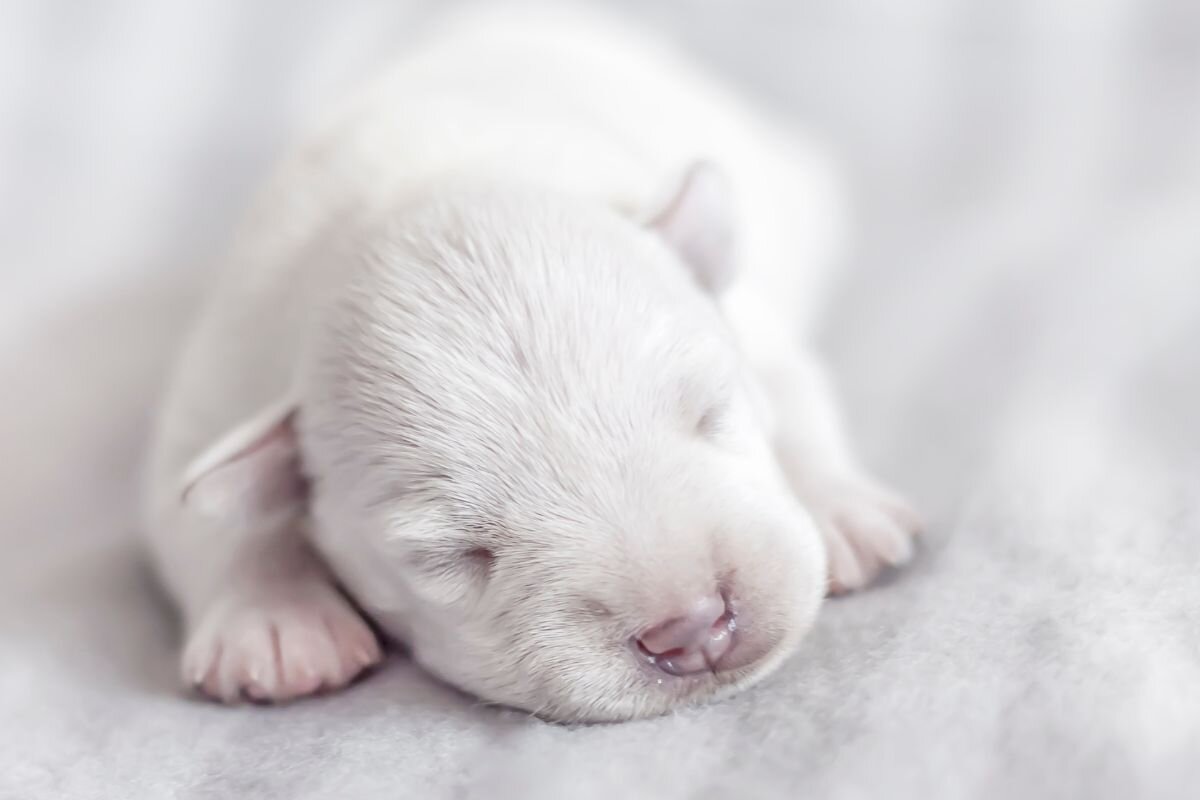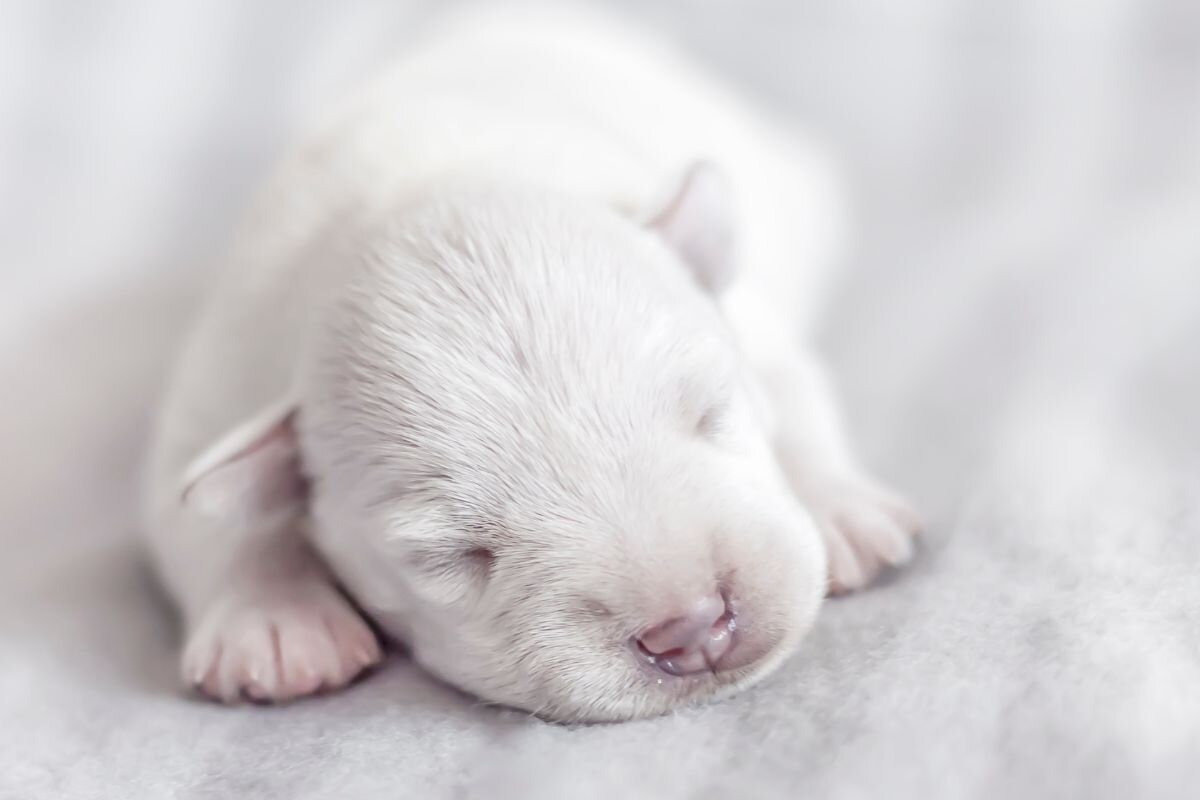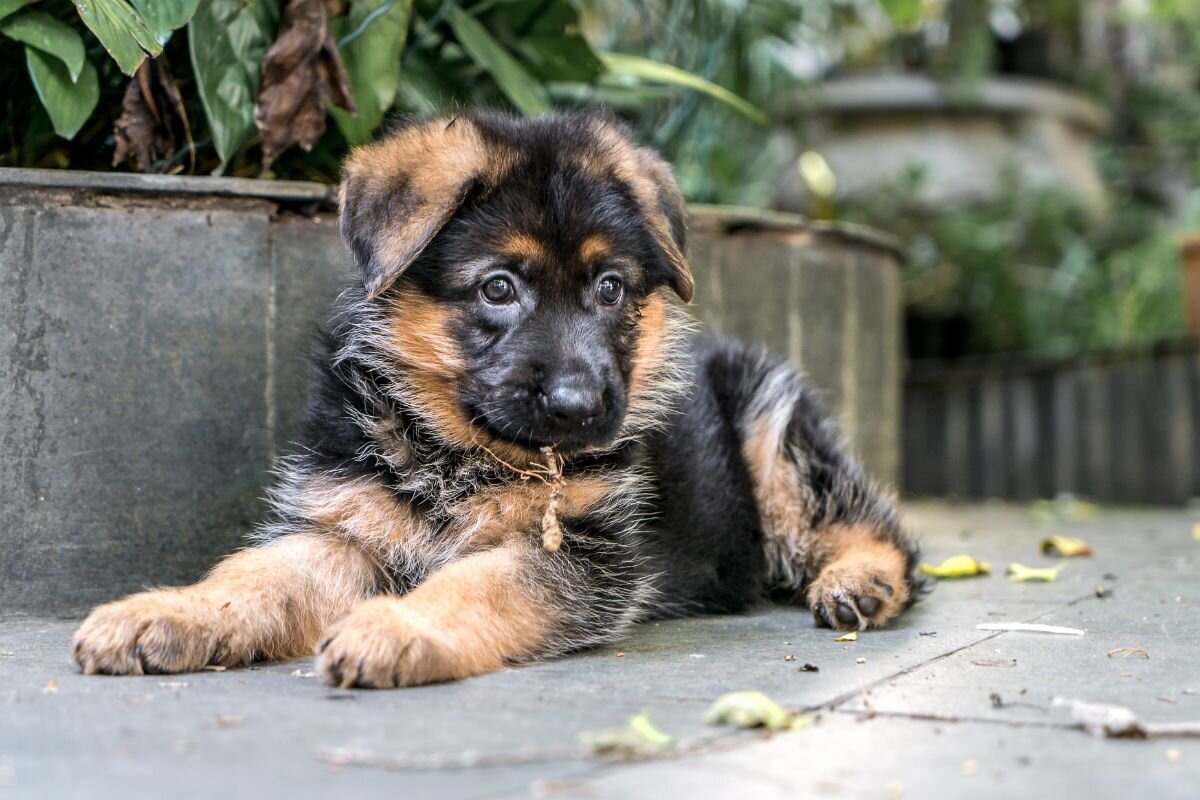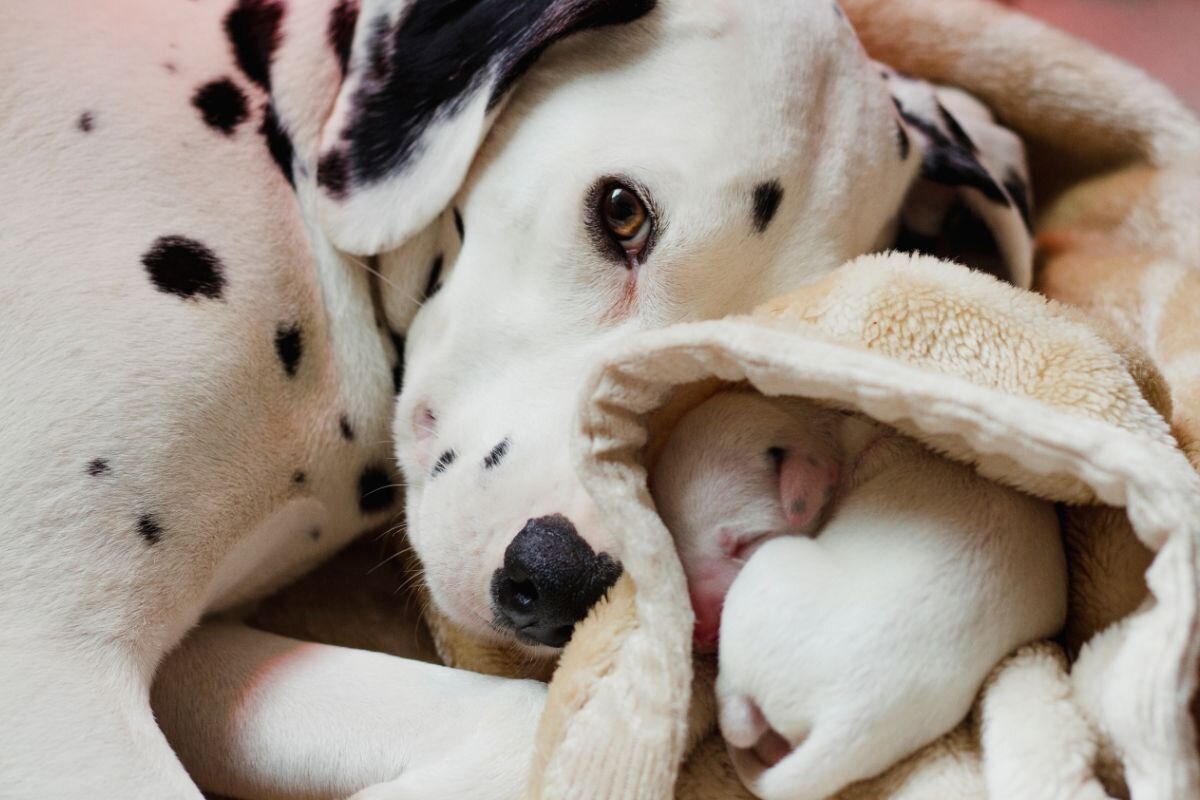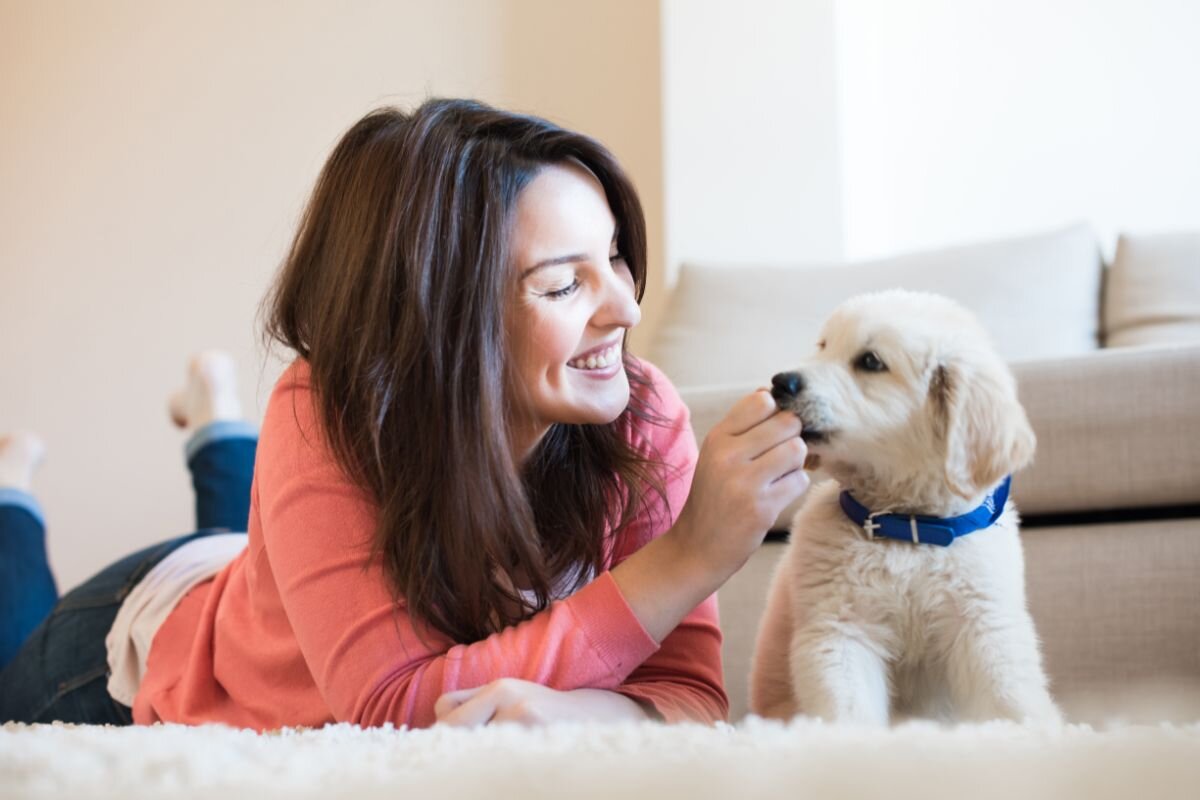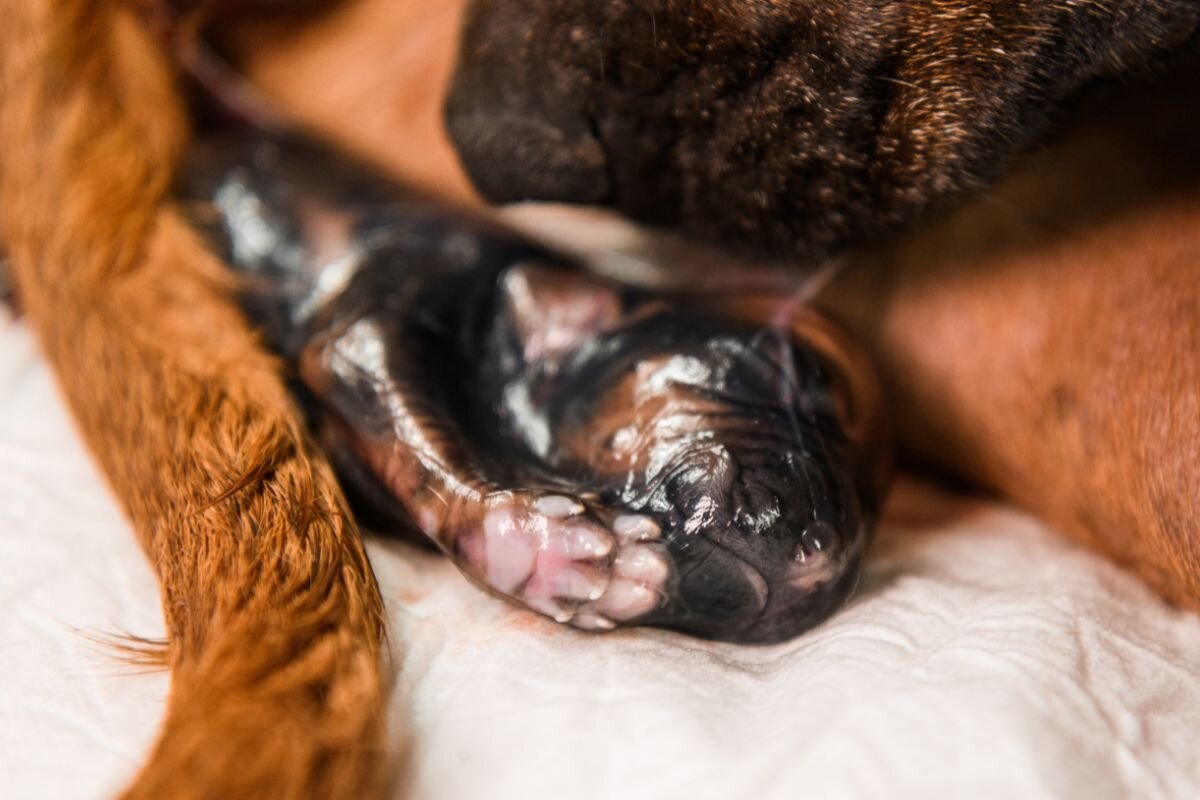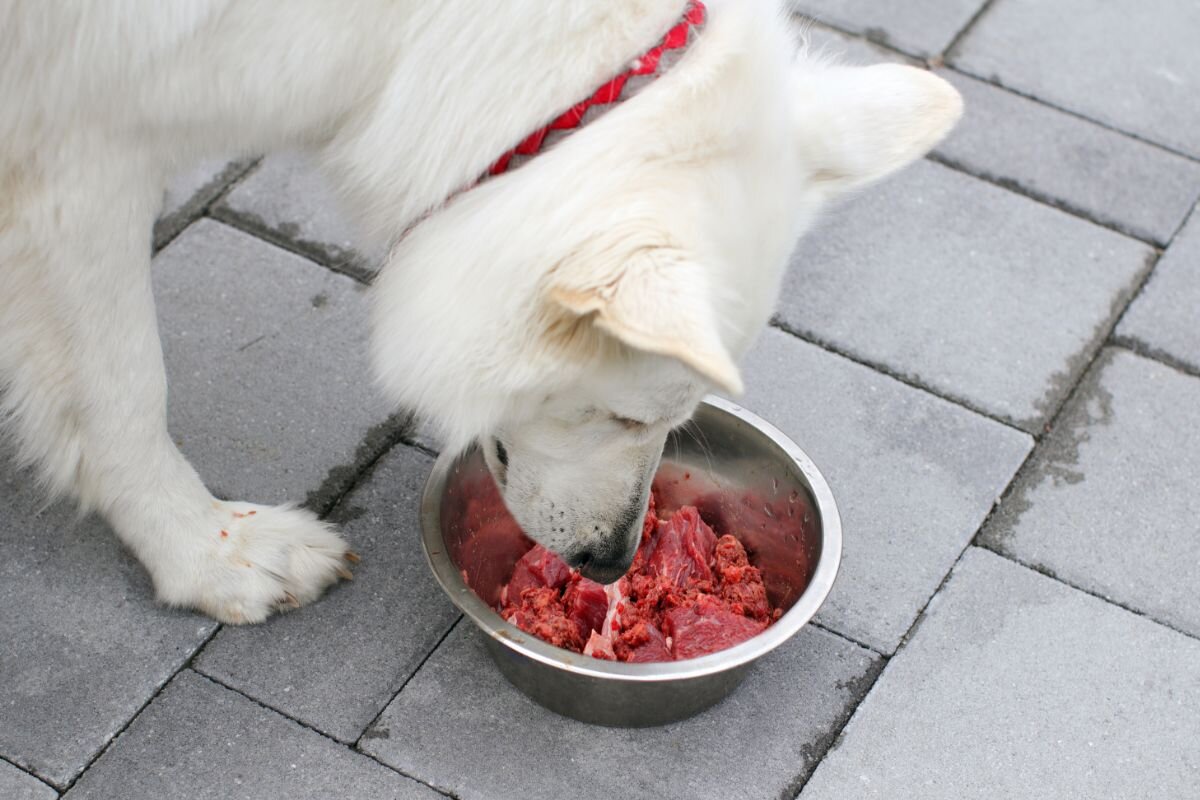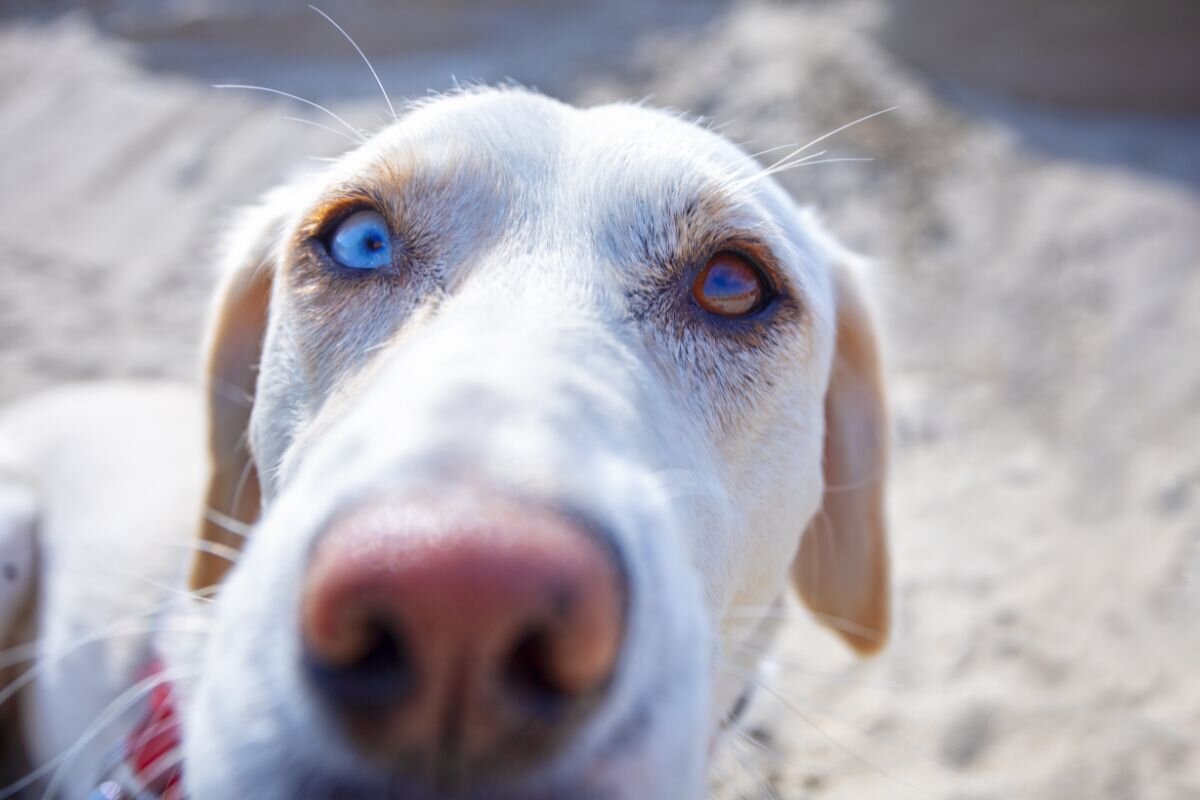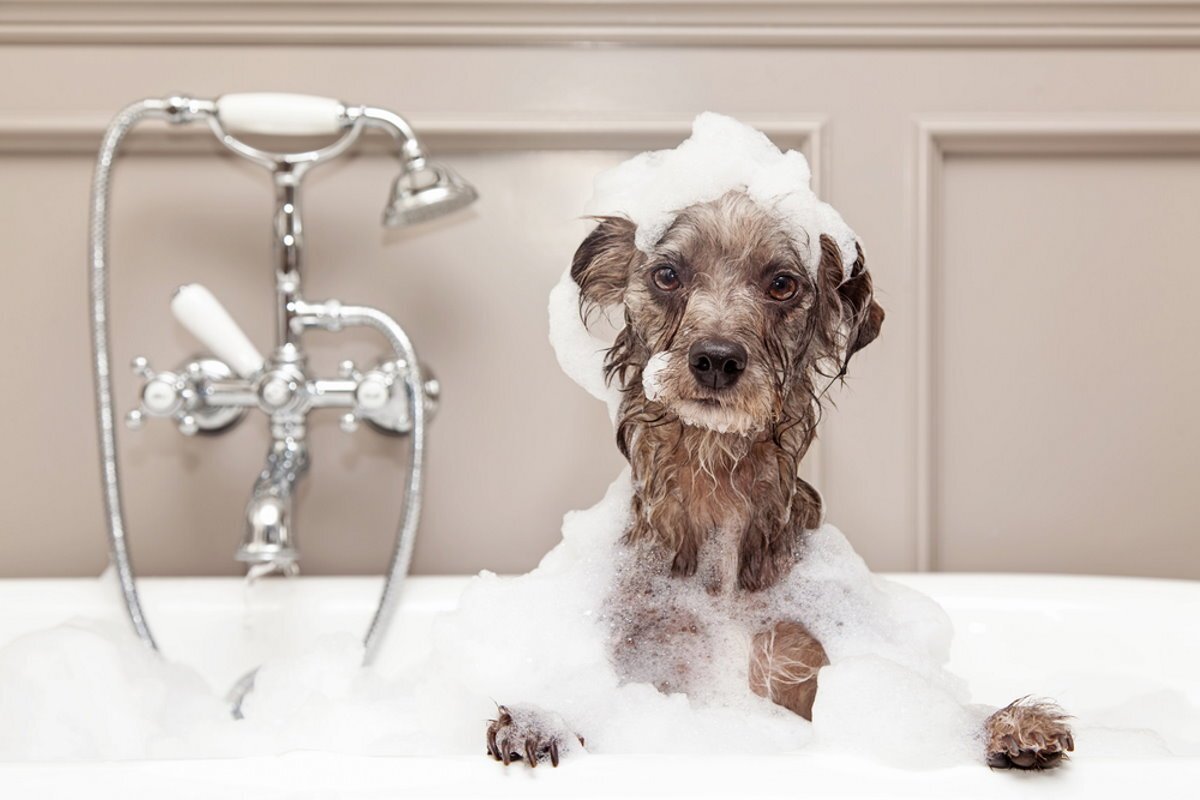Puppies are the most charming and playful creatures on Earth. Their curiosity, clumsiness, and endless energy make us smile and melt even the most callous hearts. At the same time, there are many interesting and amazing facts about puppies that many people are not even aware of.
In this article, I have compiled for you 15 of the cutest and most unusual facts about puppies that simply cannot fail to amaze you. I hope that after reading the article, you will learn much more about puppies and love these fluffy ones even a little more!
15 cute and interesting facts about puppies
1. Puppies are born completely blind and deaf
This is an amazing fact, but puppies come into the world completely helpless - their eyes and ears are completely closed. Imagine how frightening the surrounding world must seem to a tiny, blind, and deaf creature!
During the first days of life, a puppy relies only on its sense of smell and touch. It literally feels its mother-dog with its body - seeking the warmth of her body and feeling its way to the nipples to feed on milk. This is the only thing that helps the little one survive in absolute darkness and silence.
It is only around the 10-14th day that the puppies' eyes and ear canals open. Until this moment, the mother dog literally leads the blind and deaf puppies, moving them from one place to another.
Once vision and hearing begin to function, a whole new world opens up for the puppy. It attentively examines everything around, reacts to sounds, and actively explores its surroundings. The beginning of "independent life" for it is a real miracle!
2. Newborn puppies are unable to defecate independently
Amazingly, in the first days of life, puppies are physically unable to empty their bowels independently! The reason for this is that their digestive system is still very poorly developed, and the anal muscles are completely relaxed.
Because of this, feces cannot come out on their own, even if the puppy strains hard. Instead, they accumulate in the intestines, causing abdominal distension and discomfort.
What should poor puppies do? The mother-dog comes to the rescue! She carefully licks the anal opening of her puppies with her tongue, stimulating the nerve endings. This helps to relax the muscles and empty the intestines.
This natural massage lasts for about 3 weeks. During this time, the puppy's digestive system strengthens, and it gradually learns to empty its bowels independently. By the age of one month, this skill is usually fully developed. As you can see, mothers are ready for anything for the sake of their beloved puppies!
3. If you run out of treats for puppies, try raw carrots
Have you ever seen a happier creature than a puppy with a carrot? Most dogs simply adore these vegetables, especially in their puppyhood!
The thing is, raw carrots have a slightly sweet taste and juicy pulp - puppies don't need to chew them for a long time. They crunch on the juicy treat with pleasure, licking their muzzles and paws from the appetizing orange juice.
Moreover, carrots are beneficial for puppies of any age. They contain vitamins, minerals, and fiber - everything a growing body needs. So feel free to spoil your pets with this tasty and healthy treat without worrying about extra calories.
However, remember the correct way to serve it: wash, clean, and cut the carrot into small pieces or grate it finely. Whole vegetables should not be given to puppies - there is a high risk of choking.
So be careful when preparing this delicious and healthy treat for your pets. And rejoice as you watch their appetite and satisfied faces!
4. Most puppies go to the bathroom 15-20 minutes after eating
This is an important rule that all puppy owners should remember! The thing is, the digestion process in puppies happens very quickly. Already 15-20 minutes after eating, the food from the stomach enters the intestines, stimulating the defecation reflex.
So as soon as the puppy finishes eating, immediately pick it up and hurry to go outside or to a specially designated place in the house. The little one simply cannot hold back its natural urges - if you don't act quickly, an "accident" can happen right in the apartment.
Be sure to walk the puppy after each meal, even if it's just a milk formula. Try to choose the same place for walks so that the smells and associations help the little one relieve itself.
And remember: as soon as the puppy does its business, praise it immediately. This way it will quickly understand what is expected of it and will be trained to go in the right place.
5. Puppies lose their velvety, soft fur to make room for adult fur
The charming "fluff" of newborn puppies disappears not for nothing. The thing is, this first puppy fur is not meant for protection - it simply keeps the little one warm at a very early age.
As the puppies grow, their skin begins to actively function, producing hair follicles for adult fur. At that point, the fluffy down is no longer needed - the hair falls out, making room for new ones.
This shedding can be uneven: today the puppy may be losing hair on its sides, tomorrow on its back, and the day after tomorrow its tail may shed. Don't worry, over time the fur will grow back thicker and more even!
Sometimes the puppy's fur color changes during the shedding process. For example, a reddish baby can darken slightly, while a black one becomes less saturated. But the characteristic "puppy look" will remain with your pet well into old age!
6. Puppies love fuss! Petting, rubbing, anything - they just love it!
As soon as a puppy finds itself in a person's arms, it immediately turns into a whirlwind of emotions and sensations! The little one needs contact, caresses, and attention from its owners.
An electric discharge of pleasure runs through the puppy from people's touches on its body. It squints its eyes, exposing its belly, back, and ears to the gentle hands, wagging its tail and nudging its wet nose into the palms.
Stroke the puppy on one side and then the other - and you will see how it will keep turning, offering new areas of its body. Scratch behind its ear or press under its chin - the baby will purr with pleasure, spreading out on its back.
Any touch, rub, or scratch is a real paradise for puppies. This way, they explore the surrounding world and receive a lot of positive emotions, as well as strengthen their bond with the owner! So don't skimp on affection for your pet.
7. Puppies sleep a lot... about 15-20 hours a day!
This fact is amazing, but absolutely natural for growing puppies. The thing is, the first months of life are the most intensive period of development for puppies. Their bodies grow right before our eyes, and the brain forms a huge number of nervous connections.
All these processes require a tremendous amount of energy. That's why puppies sleep so much - it allows them to save the body's resources and direct them to important processes of maturation.
After eating, puppies often drift into a state close to a coma - that's how deep their sleep can be. They can nap after eating all day if left undisturbed!
But don't worry if your puppy spends most of the time with closed eyes. This is absolutely normal - this is how a rapid gain of muscle mass and weight occurs, which will allow the little ones to run and play actively in the future. So don't wake a sleeping puppy, let it gather strength!
8. The size of a puppy litter depends on the breed
The number of puppies in a litter can vary greatly - from 1-2 to 12 and more puppies. This indicator directly depends on the characteristics of the breed of the mother dog.
For example, large breeds like the German Shepherd, Rottweiler, or Great Dane usually have litters from 5 to 10 puppies, while small decorative dogs like Dachshunds, Chihuahuas, or Pekingese usually give birth to 1-4 puppies. The larger the breed, the more space in the uterus for the development of a greater number of embryos.
However, too large a litter poses risks to both the puppies and the mother. In such cases, the puppies are born weak, and the female dog becomes exhausted during nursing.
9. Dalmatians are born completely without spots
This amazing fact is indeed true! Dalmatian puppies come into the world completely snowy white, without a single black spot on their fur. It seems as if entirely different dogs were born!
The characteristic coloring of this breed does not develop immediately. Black pigment cells migrate to the skin's surface only at 3-4 weeks of the puppy's life.
First, scattered spots appear on the muzzle, paws, and tail tip, and then their quantity gradually increases, spreading throughout the body in large uneven spots - thus the pattern acquires the familiar outlines of a Dalmatian.
So don't be surprised if your Dalmatian's puppy's color is changing right before your eyes. This is a normal process of forming the breed's appearance! By 3-4 months, the coloring will take on its final distinctive pattern.
10. It's never too early to start training
Many owners think that puppies can only be trained after vaccinations and adulthood, but this is a deep misconception!
By 2 months, little ones' characters are formed, and basic reflexes are developed. This is the best time for a puppy to learn commands and be taught behavior rules.
Start training your pet as early as possible - from 8-10 weeks. Teach it to respond to its name, perform simple commands like "sit," "stay," "no." Get it used to walking on a leash during short walks.
If the puppy is regularly trained from an early age, it will grow into an obedient and easily manageable dog. This will save you a lot of nerves in the future!
Remember, puppies should only be trained using rewards and treats. No harsh scolding or punishment! Then the puppy will grow up friendly and confident, retaining trust in its owner.
11. Puppies also have milk teeth!
Just like our children, puppies have milk teeth. They begin to erupt at 3-4 weeks of age. First, the incisors at the top and bottom, then the canines and premolars.
The standard set of milk teeth in puppies consists of 28 teeth. These teeth are smaller in size than permanent ones and have slanted edges. They are very sharp - puppies actively bite everything during the teething period.
By the age of 4-6 months, the milk teeth begin to gradually fall out, making way for the permanent ones. The process of changing teeth lasts until 8-9 months. At this time, the puppy should have a full set of 42 permanent teeth. Sometimes "baby" and permanent teeth coexist for some time.
Don't worry if your puppy suddenly becomes drooling and "toothy." Just monitor the tooth changing process and rejoice - your baby is growing up!
12. You can clone your puppy!
It sounds fantastic, but modern biotechnologies allow cloning of domestic animals, including puppies. This procedure has been commercially available for over 15 years.
The first dog in the world to be cloned was an Afghan hound named Snuppy. Her birth on April 24, 2005, was a real breakthrough for scientists in this field.
The cloning process is complex and still very expensive - around $50-100,000. But if your pet is truly unique, you can try to "copy" it using this method.
Most importantly, keep in mind: genetically, the twin puppies will be identical, but their character and behavior patterns may differ. After all, the conditions of growth and upbringing also influence them. So there are no guarantees that the new dog will be an exact copy of the old one, unfortunately.
13. Happy Birthday!
When your puppy turns exactly 12 months old, you can confidently congratulate it on reaching "adulthood"! However, do not be quick to grieve that your beloved has grown up and matured. In fact, puppies remain mischievous, inquisitive, and playful for a very, very long time after their first birthday!
Depending on the breed and individual character, the period of puppyhood can last up to 2-3 years. So most likely, your pet will be happy to frolic, jump, chase toys, and delight you with its playful nature for many more years.
Therefore, celebrate your little one's one-year anniversary, but do not be sad and do not bid farewell to its puppy antics. In your soul, your dog will remain a cheerful and carefree puppy for a long time to come! Love and rejoice in every day spent together.
14. How many puppies are born every day?
The numbers are truly staggering! According to statistics, around 1.2 million puppies are born in the world every day. For comparison - the world's human birth rate in 2024 is approximately 368,000 per day, or about 256 births per minute.
Such a ratio is due to the fact that the dog population is significantly larger than the human population. Additionally, these animals have higher fertility rates and reproduction frequency.
Most puppies come into the world with irresponsible owners of mongrels or stray dogs. These little ones are doomed to suffer from hunger, cold, and diseases, never finding a home.
Well, a million newborn puppies a day is a lot. And behind each of these little lives stands a great responsibility for those who bring a pet into the house and take care of the new generation of dogs.
15. Puppies can be born green!
You won't believe it, but puppies can be born green! This rare but realistic phenomenon sometimes happens at the birth of puppies of certain breeds. Due to peculiarities of pigmentation, the little ones come into the world with brightly green fur!
This happens because of the pigment called biliverdin, which penetrates through the mother's placenta and causes green pigment in the fur. Don't worry, it disappears after a few weeks. You don't see adult dogs of green color, do you? Well, unless they roll in the grass.
Conclusion
So, we have learned about 15 amazing and charming facts about puppies!
These cute creatures come into the world completely helpless, blind, and deaf. They cannot go to the bathroom independently and constantly need their mother's care.
But puppies grow and develop incredibly fast! They shed milk teeth, change their fur color, and form their character. They sleep a lot, eat, and enjoy life.

